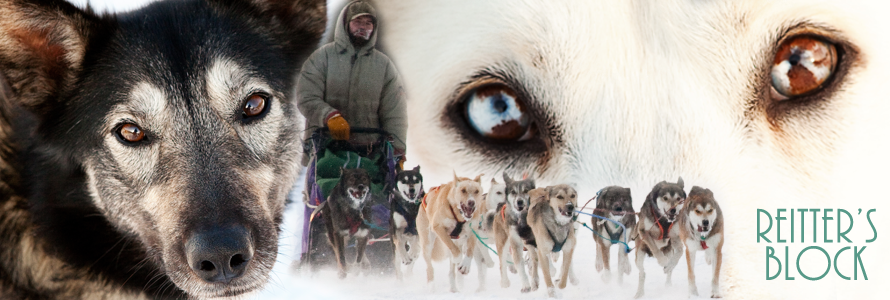 |
| Ray Redington Jr's dogs at the Ceremonial Start of Iditarod 45. March 4, 2017 |
While it is WAY too early to tell who is going to win in the first 24 hours of the race, you can begin to gauge what teams are ready and have their routines down. You can also drive yourself crazy wanting to know what's happening in between checkpoints and refreshing the tracker. Slow down, take a breath. There's still 7 or so days of race to go before it becomes a nail biter.
The teams have made it through the first checkpoint of Nenana. The only Iditarod checkpoint on "the road system" it's different than any of the others as it's easily accessible to everyone. This is the only checkpoint teams can get help from family and handlers. Last time the race came through here it was disorganized and chaotic, they got it right this time, though. No sleds backed into by dog trucks.
Trail reports from teams coming in all agreed on one thing - the trail was better than what they thought it would be. Deep, punchy snow for the later teams seemed to be the theme of the reports, which is not surprising. The further back one is this early in the race, the more chewed up the trail becomes. The first day of racing mushers ride the brake which means a once packed trail can become just deep nasty snow by the time 30 or so teams churn it up. That means another 40 or so teams are essentially breaking trail all the while churning it up for the next team because of the brake.
An interesting note is that the Seaveys are leading the race early. Like Martin Buser, they've headed out ahead of the rest and are not taking it easy like in years past. A lot of theories go into the reasoning. Anything from it being a River trail this year so the running is a little less taxing than running up and over mountains like the traditional route would be. My theory is they planned to get out ahead of teams because of the reports of a lot of snow on the trail. Trail breakers go ahead of the race to lay down a trail using snow machines (on the traditional route most of this is done by the Iron Dog). The trail wouldn't be very nice once 30 or so teams went over it, my guess is they'd rather churn up the trail than run in it.
The most attention has gone to Dallas Seavey's new carbon fiber and kevlar sled bag. It looks like one of those old fashioned Olympic Bobsleds. I'm waiting for the 1988 Jamaican Bobsled team to pop out of it. Most fans have said they don't like where the race is headed if this is the direction he's taking it. It remains to be seen if this sled gives him any advantage. Dallas needed a way to carry dogs and rest them (another strategy some fans are complaining about) and this is what he's come up with. There's no mistaking it's not your average sled. It makes enough noise to scare even the most seasoned moose away that's for sure. There's no way he can play a successful cat and mouse game with that racket.
Also leading the pack in the first day of the race are Martin Buser, Nicolas Petit, and Wade Marrs. Not overly surprising. Not overly troubling. It's the first day. The race won't really start for another 4.

No comments:
Post a Comment